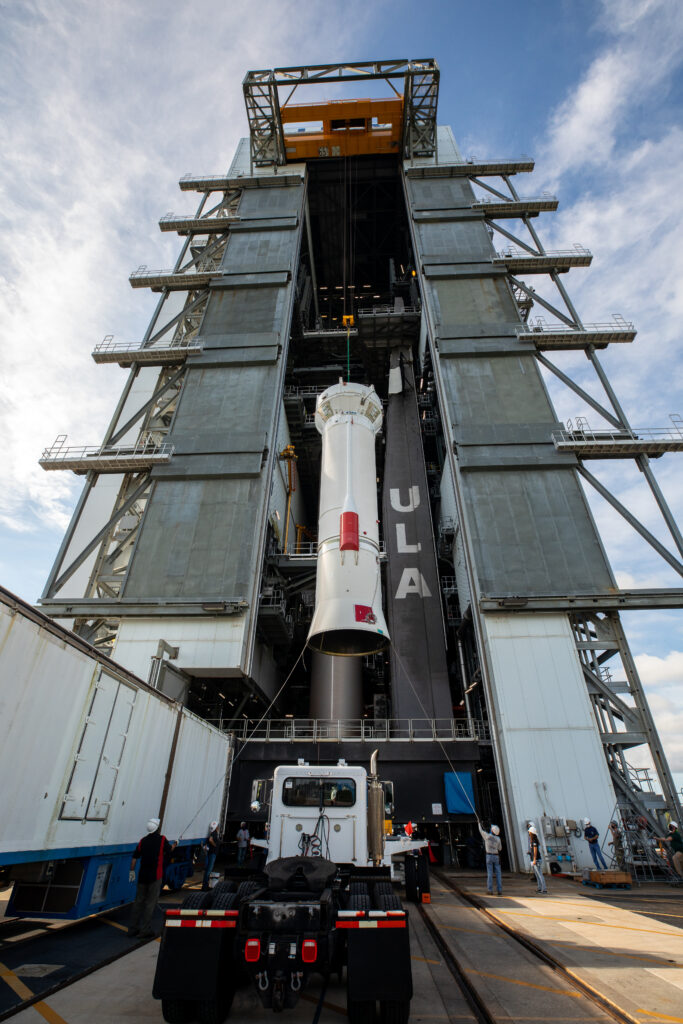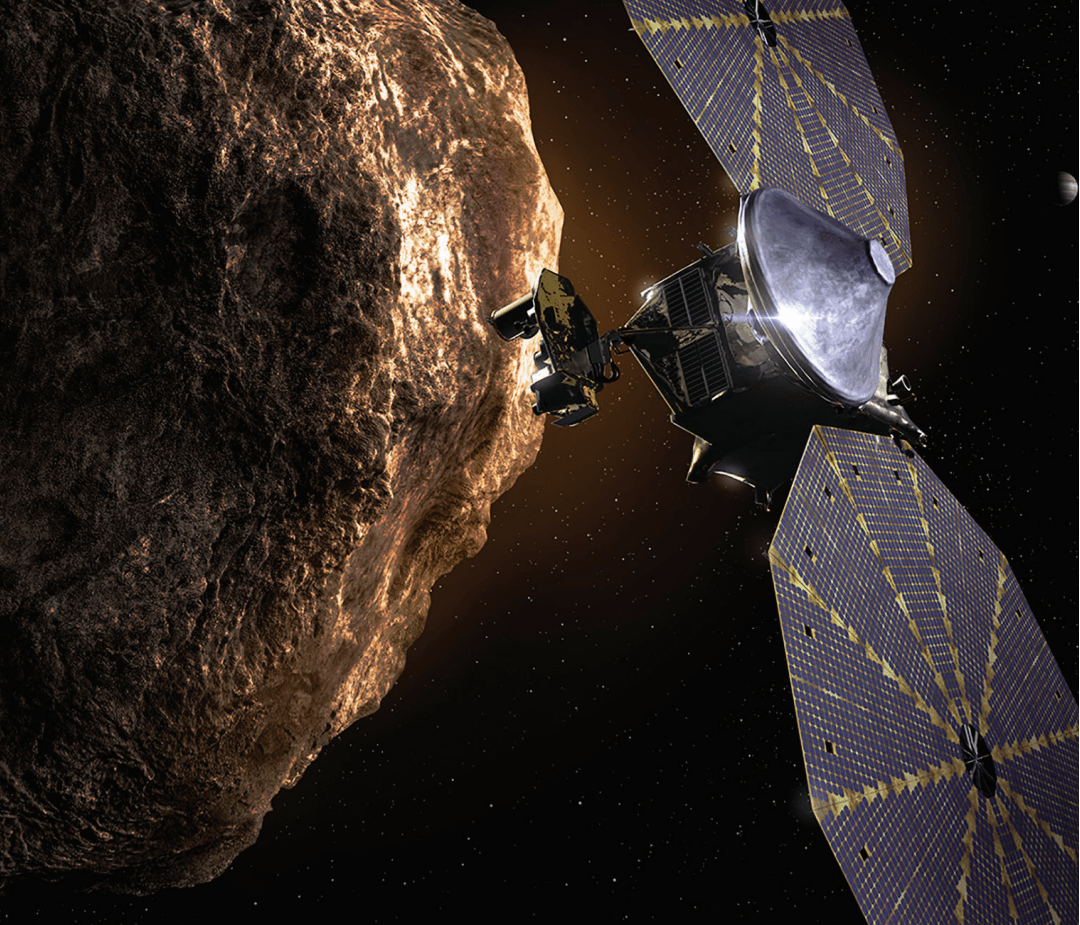NASA’s Lucy Mission is Preparing to Launch to Trojan Asteroids. Lucy, NASA’s first spacecraft to research Jupiter’s Trojan asteroids, has been thoroughly tested, fuelled, and is being packed into a capsule for launch on Saturday, Oct. 16. These asteroids are named after characters from Greek mythology, and they orbit the Sun in two swarms, one leading ahead of Jupiter and the other trailing behind. The spacecraft Lucy will be the first to visit these asteroids. Scientists seek to refine their hypotheses on how our solar system’s planets originated 4.5 billion years ago and why they arrived up in their current shape by analyzing these asteroids up close.
Trojan asteroids are asteroids that are located 60 degrees ahead and behind (at L4 and L5) of a planet or moon in its orbit around the sun.
The Jupiter trojans, often known as Trojan asteroids or just Trojans, are a huge group of asteroids that circle the Sun alongside Jupiter. Each Trojan librates around one of Jupiter’s stable Lagrange points L4, which is 60 degrees ahead of the planet in its orbit, or L5, which is 60 degrees behind. Around these Lagrangian points, Jupiter trojans are dispersed in two elongated, curved zones with an average semi-major axis of around 5.2 AU.

[email-subscribers-form id=”1″]
“With Lucy, we’re going to eight never-before-seen asteroids in 12 years with a single spacecraft,” said Tom Statler, Lucy project scientist at NASA Headquarters in Washington. “This is a fantastic opportunity for discovery as we probe into our solar system’s distant past.”
Lucy crew members have spent the previous eight weeks at NASA’s Kennedy Space Center in Florida, prepping the spacecraft for takeoff, following all pandemic regulations. From the mission operations centers at Kennedy Space Center and Lockheed Martin Space in Littleton, Colorado, engineers have tested the spacecraft’s mechanical, electrical, and thermal systems as well as practiced performing the launch sequence. Engineers deployed the spacecraft’s high-gain antenna in early August, the spacecraft’s second most visible feature after its massive solar arrays, which will allow it to connect with Earth.
“There has been a lot of hands-on work,” said Donya Douglas-Bradshaw, Lucy project manager at NASA’s Goddard Space Flight Center in Greenbelt, Maryland. “This summer has gone by so fast; it’s hard to believe we’re nearly at launch.”

Propulsion engineers completed filling Lucy’s fuel tanks with around 1,600 pounds (725 kilograms) of liquid hydrazine and liquid oxygen on Sept. 18, accounting for 40% of the spacecraft’s mass. The fuel will be required for precise maneuvers to get Lucy to its asteroid destinations on time, while the solar panels – each the width of a school bus – will be used to recharge the batteries that will power the spacecraft’s equipment.
The Lucy spacecraft will shortly be crammed into the launch vehicle’s two halves, which will clamshell shut around it. The Lucy team will be able to communicate with the spacecraft via an “umbilical cord” after it has been encased.
“Launching a spacecraft is almost like sending a child off to college – you’ve done what can for them to get them ready for that next big step on their own,” said Hal Levison, the principal investigator of the Lucy mission, based at the Southwest Research Institute in Boulder, Colorado.
The encased spacecraft will be moved to the Cape Canaveral Space Force Station’s Vehicle Integration Facility in early October, where it will be “mated” with a United Launch Alliance Atlas V 401 rocket. From Space Launch Complex 41, the Atlas V will take off. Lucy will be launched outside Earth’s atmosphere, where she will begin her long trip to the Trojan asteroids. A few days prior to launch, engineers will power up the Lucy spacecraft in preparation for the mission. This process will take about 20 minutes.

“The spacecraft will sit in launch configuration and the engineering team will continuously monitor its health and status to make sure Lucy is ready to go,” said Jessica Lounsbury, the Lucy project systems engineer at Goddard. “And then it’s launch day.”
Lucy’s initial launch attempt is set for Oct. 16 at 5:34 a.m. EDT. At 1 a.m. on that day, the team will be “called to stations,” which means everyone will report to mission control and other stations to monitor the spacecraft and go through the whole launch countdown protocols. If weather or other factors prevent a launch on that day, the team will have more launch opportunities starting the next day.
Lucy’s chief investigator is based in the Boulder, Colorado, division of the San Antonio-based Southwest Research Institute (SwRI). Goddard is in charge of overall mission management, systems engineering, as well as mission safety and assurance. The spacecraft was built by Lockheed Martin Space in Littleton, Colorado. Lucy is NASA’s 13th Discovery Program mission. For NASA’s Science Mission Directorate in Washington, the Discovery Program is managed by the Marshall Space Flight Center in Huntsville, Alabama. NASA’s Launch Services Program, based at Kennedy Space Center, is in charge of the launch.
For more information about NASA’s Lucy mission, visit:
https://www.nasa.gov/mission_pages/lucy/overview/index

